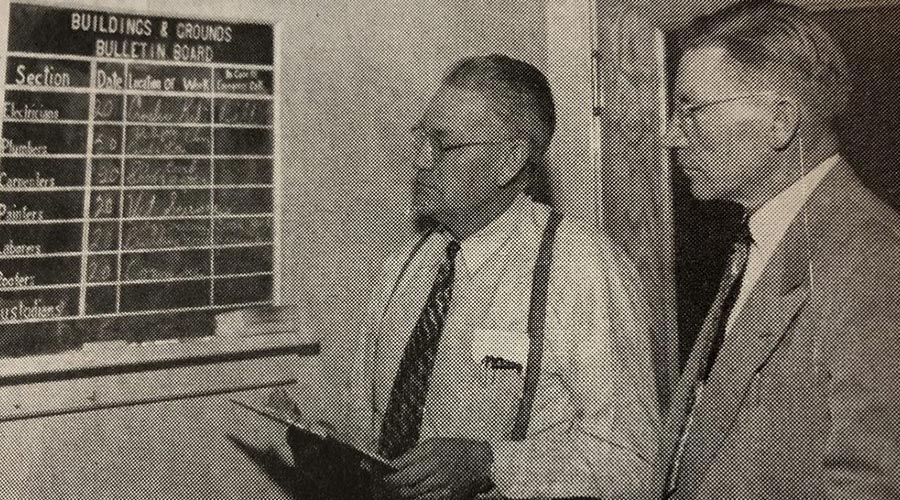Finding the Right Communication Channel
It seems there are ever more options for communicating beyond an in-person meeting — e-mail, memos, blogs, tweets, status updates, teleconferences, text messages, Power Point, web pages, Yammer, video chat and on. No one is always superior; it all depends on audience and content. Here are a few things to consider when selecting among the FM favorites.
E-mail. For some, it's hard to imagine life before e-mail. But as ubiquitous a tool as it is, it still has its limitations. Christiano says he prefers to think of it as a tool for clarification, to open up a dialogue or to provide a time stamp for a decision. When you have a discussion with someone about a change or process, use an e-mail afterwards to lock in the details. "Go through and reiterate what it is so that there's no confusion whatsoever," he says. "So when it's two months later and you're actually doing it the individual doesn't say, ‘You never told me you were going to tear these walls down or move this office over there.'"
As well, facility managers should be careful not to needlessly add to the information overload by abusing e-mail or sending out sloppy messages. He would tell his facilities team, "When you send this out, I don't want people focusing on some grammatical mistake or confusion in the message," he says. "I wanted to make sure it was crystal clear." Whenever anything written was being sent out, whether it was to another department or to the whole company, it would first be proofread and commented on by another facility management team member.
"You'd be surprised how many times people would come back and say, ‘I can't believe I was about to send that out,'" he says. "But until you have fresh eyes looking at it, you're never going to catch mistakes that you sometimes made on the first try."
The Memo. In a place he used to work, Christiano says one of the facility team members used to sign his name to the memos. Whether he was trying to take credit consciously or subconsciously was not clear, but the detrimental effect to the department's standing was clear. "So I had to tell him, ‘It's not you, it's the department and we're doing it for the company. So when you send it out it has to be from the facilities department, not from you.'"
That wasn't the only time Christiano, who was the director of facilities administration for Harvard Business Publishing for ten years, says he saw people claiming team communication vehicles in such a manner, plastering their name over everything to get recognition. "It's a team, and if it's a team, it has to go out as a team memo," he says. "In most cases, the best way to help develop team work is to communicate as a unit."
The Survey. The key with surveys is to keep them brief and phrased in such a way that the facility department comes across as having the recipient's best interest at heart and is open to collaboration. It should be phrased in terms of what you can do to help them. In talking with one of his students about a survey she had made for her internship to evaluate the facility's workflow, Christiano worked to get her to see that the actual workflow was the least problem. "Where people should be sitting is probably the easiest part," he says. "The hard part is communicating to existing employees what the problem is and how you're all going to work together to solve it. That took me a long time to learn."
The Newsletter/Report. At Texas Children's Hospital, Gumeringer's department creates a six-page bi-monthly in-house newsletter called Service Connect, which is distributed to 450 employees and senior leadership. The facility department is also the only one at the hospital to generate an annual report document, which is distributed to the senior executives and board of trustees.
When the hospital's marketing department first saw the documents, Gumeringer says, the marketers were surprised by the quality of the design. Gumeringer admits that it is a significant time commitment to generate them. But he sees a clear payback.
"We publish things of interest to our employees but we also always publish things that are of interest to senior leaders in the organization," he says. "If they know that we're doing things down here, that helps us from the standpoint of communication with them. I believe it adds a lot of value to the organization, because they know we're not just sitting down here like the Maytag repair man waiting for something to happen."
In an age where these documents could easily be presented electronically, Gumeringer chooses documents printed in color on glossy paper for a couple reasons. First, many of his employees do not have access to computers at home, so it would be impossible for them to share their achievement honored in Service Connect with their families. But it's also a response to the overwhelming nature of electronic communication. "We're being bombarded with electronic information; I can't read it all, what people send to me," he says. "But when they send me things like a Service Connect, I will read it. I will look at it cover to cover. I will take it with me to meetings or when I ride the shuttle bus back and forth to meetings. It's so much harder to read that electronic stuff on the bus, on my little cell phone screen."
Person to Person
Gumeringer goes beyond documents when strategizing about his communication with his employees. Once a quarter, he holds town hall meetings for more than 500 employees. He also hosts a quarterly Director's Council where he entertains 24 employees for lunch or breakfast with no other leaders allowed in that meeting. "That's a communication tool that I use to get information from staff regarding issues that might not bubble up through their leadership," he says. For example, during one Council a request came up for ride-on cleaning equipment — a request that had been already made through standard channels but was silenced by an individual who believed cleaning is best done by hand. "So we have established or created many lines of communication, designed to channel information upwards to leadership, channel information to our employees, and to get information from our employees about where they have issues or needs."
In the end, good communication is about never making assumptions. Don't assume a message has been received just because you send it. Don't assume that information has been understood without soliciting feedback. And don't assume that communicating is not important in the first place.
A big complaint in facilities, Christiano says, is people wondering why they didn't know about a change before it happened — someone in the facilities department thought the change was so minor that notification would just be a nuisance and they should just go ahead.
"I think people would rather get what they consider to be an unnecessary memo if there's some validity to it, than to not be told about something even if it's relatively minor," Christiano says. "When in doubt, communicate."
Related Topics:














